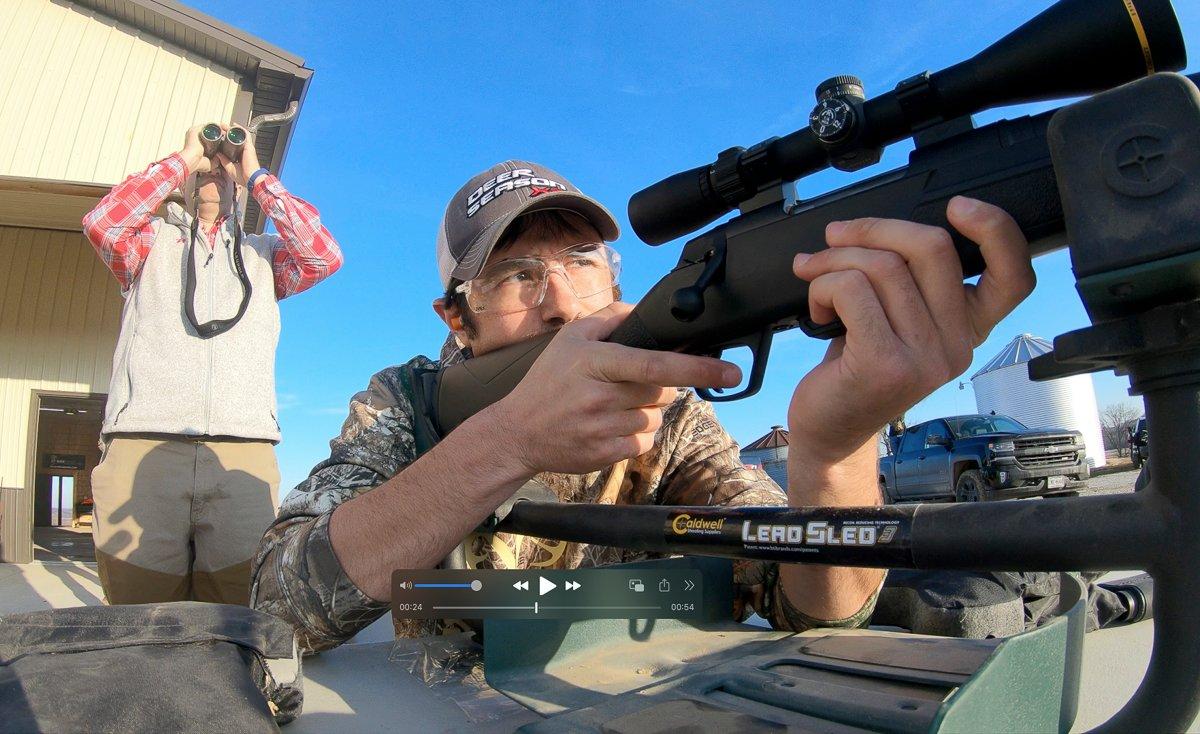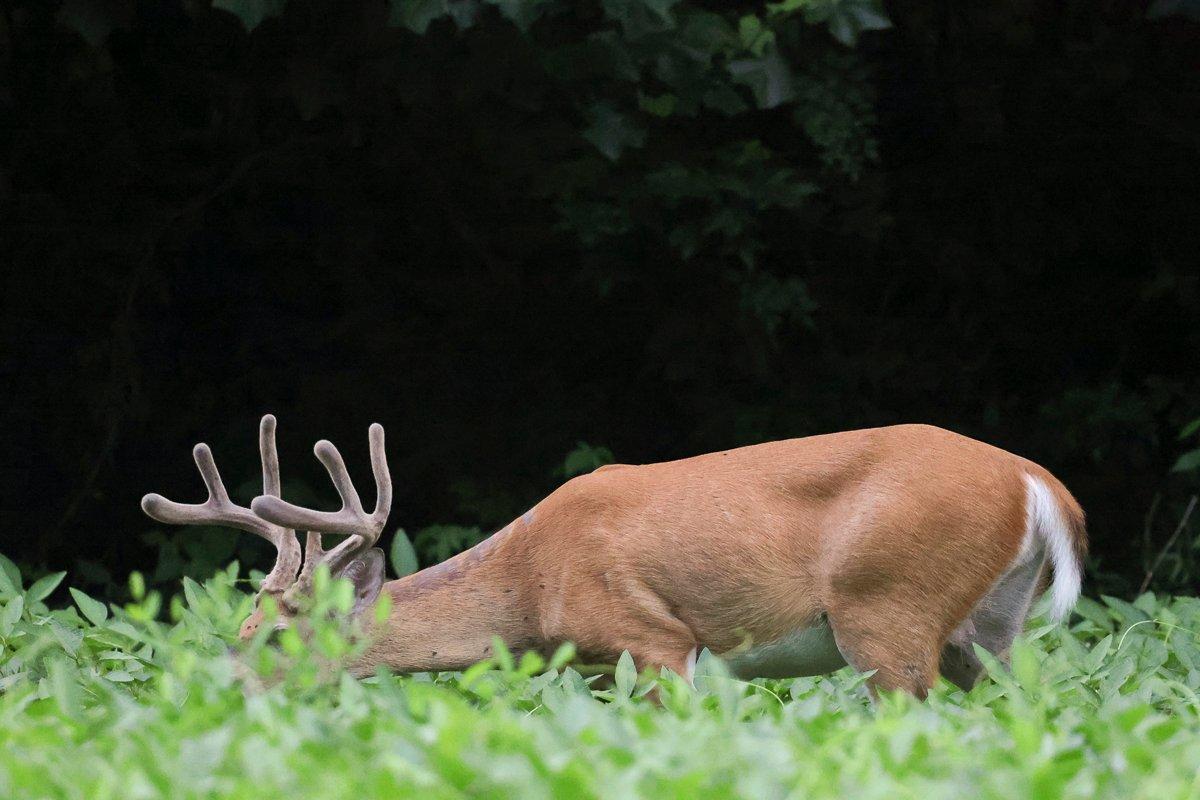Mastering deer hunting's learning curve can seem daunting, but it's a rewarding journey. Use these expert pointers to get started.
Black, beady eyes bore into yours. Ears sling forward like two satellites homing in on a signal. Then the inevitable — deafening snorts that send every deer in the field packing. You've spooked another deer, and filling that first tag seems tougher than ever before.
Looking from the outside in, deer hunting can seem like an extremely difficult skill (or, more accurately, group of skills) to learn. And although it isn't an easy process, it's more than attainable, even if you currently have no one to teach you. Here's a primer on getting started, with 25 tips for new deer hunters.
1. Take a Hunter Education Course
These are often required, and it's important for new deer hunters to pass their state's hunter education course. Classes are generally one-day events but are sometimes offered in half- or multiple-day sessions. Since COVID, it's also common to complete a course online and pass the shooting portion in person. For people who don't have time to complete a course before the hunt, some states offer a one-year exemption program, but you must take the appropriate steps to obtain it.
2. Complete a Learn-to-Hunt Program
Those who aren't familiar with hunting or don't have a mentor to help them can obtain important skills through a learn-to-hunt program. Most are offered by state agencies or conservation organizations. However, private groups focused on offering such programs are becoming more prevalent.
3. Find a Hunting Mentor
The best way to learn is to have a dedicated teacher. Finding a hunting mentor, also known as a hunting buddy, is a great way to develop the skills needed to be a good hunter.
4. Take a Bath
Whitetails have 297 million olfactory receptors. Humans have about 5 million. Translation: Whitetails have a good smeller, and human stench is their least favorite aroma. Showering in scent-reducing soap is a great way to lower the odds of a deer getting a nose full of your stink.
5. Keep Clothes and Gear Scent-Free
Just as it's important to minimize scent on your hair and skin, hunting clothes and other gear should be as scent-free as possible, too. Camouflage, packs and other fabrics can hold smells that will alert deer to your presence. Reduce these with appropriate washes or sprays.
(Don't Miss: How to Protect Your Hunting Spots)
6. Learn Your Weapon
A safe, ethical hunter must learn their weapon. Being able to use a bow, crossbow, rifle, shotgun, or muzzleloader appropriately and effectively is a prerequisite to any hunt. Spend time on the range learning the weapon, honing your skills, and gauging range.
7. Understand Your Quarry
Being a successful hunter requires an understanding of the animal you're hunting. This is true in general terms of the species and with specific tendencies of target animals, too. Understanding what makes a deer tick is important. Educate yourself on the what, when, where, why, and how of whitetail behavior.
8. Find a Good Hunting Spot
The best hunter is only as good as their hunting spot. You can be the most skilled outdoorsman in history, but if there aren't deer on the landscape, venison won't be on the menu. Spend time looking for a good hunting spot and you'll experience far more success. Consider private and public lands.
9. Scout Your Hunting Area
When you locate a spot, spend time scouting it. Look for deer sign, including beds, tracks, trails, rubs, and scrapes. If you see deer while in the field, even better. Don't worry about spooking deer one time. They'll likely return within a day or two. However, repeated encounters with humans can make deer alter their behaviors, habits, and patterns.
10. Post Some Trail Cameras
While in the field, consider posting trail cameras at locations of interest. Scrapes, field edges, trail intersections, pinch points, watering holes, and other areas deer frequent are excellent spots to inventory the herd and learn travel patterns.
(Don't Miss: Off-Season Game Plans for This Fall's Bucks)
11. Connect the Dots
To consistently fill deer tags, you must understand how deer use the property they inhabit. This requires a firm understanding of where deer bed, eat, and drink water, and how they get from one location to the next. These travel routes are excellent interception points.
12. Use Good Entry and Exit Routes
You can't harvest a deer if you spook it while heading to your hunting spot. Use good entry routes that don't alert deer to your presence. Do the same with exit routes, as spooking deer on the walk out can decrease the quality of the area over the long run.
13. Practice Real Hunting Scenarios
Hunting is a high-energy, high-emotion activity. Increased levels of adrenaline can make it more difficult to focus, think critically, and make good shots. Practicing real-life hunting scenarios can create muscle memory that will be useful when the real thing happens.
14. Read the Wind
As mentioned, deer can smell very well. This makes it crucial to read the wind, know which direction it's blowing, and choose access routes and stand locations accordingly. If the wind shifts, it might require changing to a new spot.
15. Learn to Walk
Although their noses are incredible, whitetails also have very good eyes and ears. They are especially adept at spotting movement and pinpointing the location of sounds. That means it's imperative that hunters walk very slowly and quietly in the field. Certain techniques, such as the fox walk, were even used by Native Americans to minimize noise.
(Don't Miss: Really, How Old is that Buck?)
16. Learn to Sit
Deer have horizontal pupils, which increases their horizontal field of view. However, it limits their vertical field of view, which is why hunting from an elevated position makes sense. Still, don't take a deer's sight for granted. If you're moving, a deer will spot you quicker than you can say, Oops. So be still when deer hunting, regardless of the impressiveness your hide.
17. Be Quiet
Recent studies by the National Deer Association revealed how scared deer are of the human voice. They reacted even more negatively to it than bear, cougar, coyote, and wolf vocalizations. That's proof enough that you shouldn't talk while deer hunting. If you must, keep it to a light whisper at a low tone. Deer can't hear it as well as higher pitches.
18. Try Different Tactics
Hunting is a broad activity. Many tactics work, and specific situations often require different approaches. Therefore, where legal and when applicable, consider calling, rattling, using scent lures, and trying even more advanced tactics. Of course, being able to read a situation and responding effectively is part of selecting and deploying tactics.
19. Have Patience
Hunting is one of the most patience-driven activities. It requires unparalleled patience to be consistently successful. Draw on that inner peace and contentment to stay in the field longer and enjoy long stints in the woods — even when things are painfully slow.
20. Know When to Shoot
Recognizing the right moment to shoot isn't difficult. You wait for an ethical shot opportunity within your effective range. The former is a broadside or quartering-away shot at a deer. The latter is dictated by your weapon, environmental conditions, and personal abilities. Of course, there's a difference in taking the first good shot opportunity and waiting for a perfect one. Generally, the latter never comes. So learn to take the first good, ethical opportunity you get.
(Don't Miss: 15 Fascinating Facts About Whitetail Biology and Behavior)
21. Blood Trail Efficiently
After the shot, hunters must track blood with efficiency to retrieve downed game. Generally, not waiting an appropriate time before beginning the process is one of the biggest blunders new deer hunters make. Knowing how well you hit a deer and the general time it takes for a deer to die is an important skill to learn. During warmer weather, and in areas with higher concentrations of predators, waiting too long is a mistake, too.
22. Field-Dress Properly
Proper field care of meat is a necessary part of deer hunting. Removing the entrails as quickly as possible starts the cooling process, which is necessary to prevent spoilage. Of course, the remainder of the butchering process should be conducted correctly, too.
23. Eat the Spoils
There's no better food than wild game. Eating venison is great, but it seems to taste even better when you produce it yourself. Experiencing that connection between you and your food is part of being a true hunter.
24. Be Poised and Persistent
If you follow much social media content, you might think hunting is easy. Hunters posing with big smiles and dead deer make it seem as if there's no challenge, but what you see is the end of a very long process full of failures and mishaps. Rarely do you fill a tag quickly. It can take years of learning before you kill a deer. It can take even longer to shoot a big buck. Stay dedicated, poised, and persistent.
25. Exercise Complete Safety
The most important aspect of hunting is safety. Always follow proper safety rules and regulations. Handle, carry, and use weapons safely. Use a safety harness, lineman's belt, and safety line when hanging (lineman's belt) and hunting (safety line) from treestands. Further, be aware of other hunters and even predators in the areas you hunt. Hunting can be safe, but it's much less so when hunters aren't cautious and careful.
New deer hunters join our ranks each year. Although the learning curve can be steep, becoming a hunter isn't an insurmountable challenge. In fact, it's one of the greatest and most rewarding things someone can tackle. There's no greater connection with nature than providing your own food. Give it a try, and start the process of becoming a new deer hunter this fall.
(Don't Miss: 15 New Hunting Guns for 2022)

















